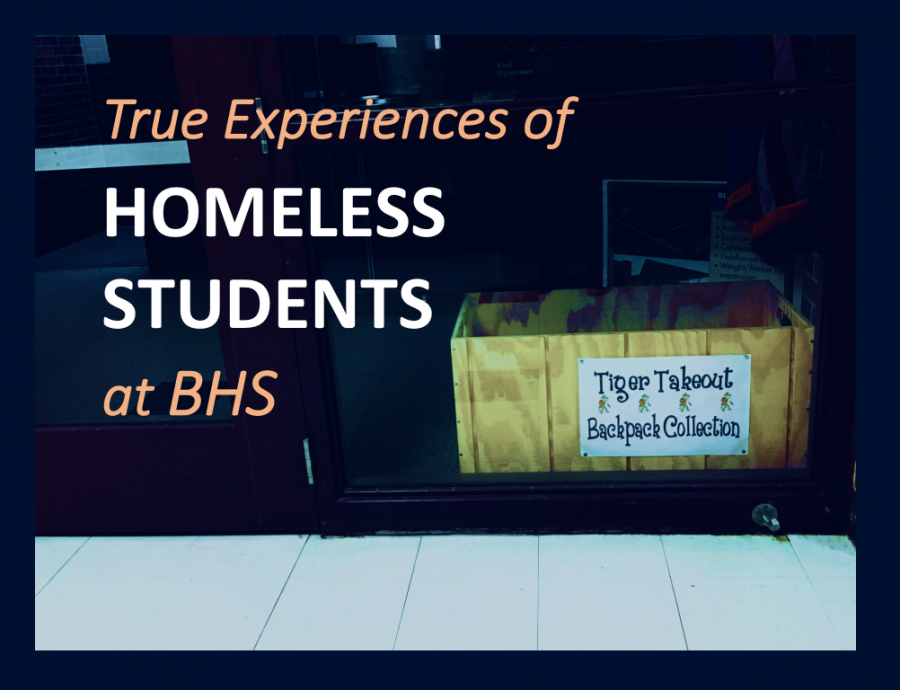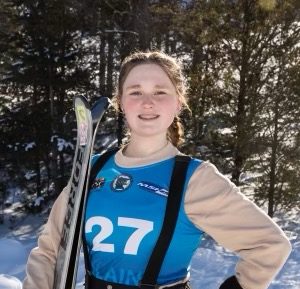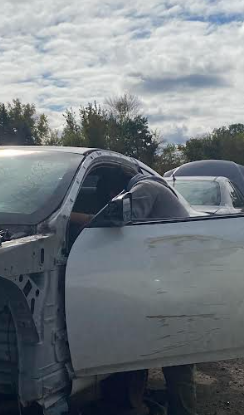True Experiences of Homeless Students at BHS
“Most adults would be in a fetal position if they would have to go through half of what these kids have experienced,” states Geiss, Blaine High school’s social worker.
Visualize coming home tonight from school. You ask your Mom and Dad to pay the fee so you can join the sports team, but they are trying to pay the apartment rent, medical bills, and for car repairs on time, so they are tight on cash. Your Mom gets into a fight with your Dad about it, and she forgets to make you dinner. You are too stressed to eat anyway, but you can’t focus on your homework, either. It’s hard to fall asleep too.
The next day at school it’s rough. Your teachers are disappointed that you didn’t finish your homework. After having not enough sleep, you fall asleep in class, and you are too hungry to focus anyways. Your friends notice you are in a cranky mood and avoid you.
For most students, they might have a bad day or two, but they know they will come home to a warm dinner and a roof over their heads at the end of the day. “For us, there might be a temporary falling apart, but for them, there is no ‘tomorrow will be better,” explained Geiss, Blaine High School’s social worker.
“Them” being students without permanent homes and little or no food security. So far this year, Blaine has about 50 to 60 families with low food security and 10 to 15 kids who are truly homeless.
Not many students are homeless as a result of drugs or alcohol abuse. Most end up in their situation because of a bad turn of events, like a loss of a job, an eviction (which makes even it harder to buy a new apartment) a broken-down car, trying to pay piles of medical bills, or even a house fire.
When their families usually live paycheck to paycheck, it causes their delicately balanced life to crumble. Sometimes, parents might divorce and find themselves unable to fully support all of the kids separately.
Other times, it is the student’s choice to leave. If their parents are constantly fighting, they might not feel safe at home, and run away.
Whatever the cause, Ms. Geiss wanted to make it clear that it was “always outside of the control of the kid.”
If a student is homeless, a friend or relative might take them in, and they’ll ‘couch hop’ from home to home. Others sleep in their car, or in a hotel. The worst-case scenario would be on a bench or in a park; which is difficult to imagine in freezing midwinter nights in Minnesota.
“Most adults would be in a fetal position if they would have to go through half of what these kids have experienced,” states Geiss.
At school, it’s hard for homeless students to focus on their work when they are concerned about core needs to survive that aren’t met and are out of their control. “They do their best, but their education is still impacted,” says Geiss.
During a teacher’s lecture, they are worrying about if they’ll be able to eat dinner tonight, wondering about where they’ll spend the night and if they’ll get a ride there, and agonizing about their unclear future.
They are also faced with questions, like, What address should I write on this form when I don’t have a permanent home? How can I give out my contact info if I don’t own a cell phone? These may seem to be minor issues, but for Geiss, when a homeless student doesn’t come to school, she can’t get in touch with them. Some homeless students have even gone missing before.
All this built up stress causes the students to react in different ways, Geiss explains. Some students will have their head down during class, speak rudely, they might be frustrated and even walk out of class. Geiss asks that students should have “a broader view of the situation” if they see someone acting like this, “If someone is crabby or rude, you don’t know what they might be going through.”
Most homeless students, however, blend in the student body. Geiss says, “You can never tell who is homeless, as they work really hard to present themselves.”
“There are kids that you talk to every day that you have no idea of what struggles they go through,” she says.
Homeless students are often reluctant to come forward and speak about their situation because of stigma. “Their main goal is to be just like a regular student,” says Ms. Pohl, Blaine’s student achievement advisor. “For homeless kids, it is so hard to ask for food and support.” Once, it took Ms. Pohl months to convince a student that they should accept food from Tiger Takeout, Blaine’s in-house food shelf, run by Pohl and Geiss.
Around eight years ago, Tiger Takeout began in the English area, disguised as a closet. It ran on donations from the generous BHS staff, explains Pohl, “everybody wanted to be involved.” As Tiger Takeout grew bigger, it was relocated in a hidden, cramped, storage room in the auditorium. New shelves were built by theater teachers who used their experience from building sets for plays. On the shelves, in addition to food items, there are personal hygiene supplies, blankets, towels, and backpacks.
Since then, other schools have followed in Blaine’s example. Today, all high schools and middle schools in the district have food shelves.
Every week, volunteers come in from Tiger Takeout’s faith partner, Chain of Lakes Church, whose mission is to end youth homelessness. They keep the shelf organized, and pack backpacks with food to be sneakily distributed to students, to preserve the anonymity of the homeless students.
Blaine’s food shelf provides supplemental food to students and families, but unfortunately, it isn’t a permanent solution to food insecurity. Although, Pohl says, “If the need is there, we will give.”
Another source of relief for homeless students is Hope 4 Youth, a homeless shelter providing transitional housing for teens and families located in Anoka. Additionally, there are showers, a laundry, a food pantry, a clothing closet, and volunteers that help teens with paperwork for getting a job, receiving healthcare, finding permanent housing, and finishing high school.
Most of the students that Pohl and Geiss have worked with have successfully graduated high school. In spite of their situation, some students have even managed to get A’s in their classes. “Education is a big part of their lives because it’s a huge part of becoming self-sufficient adults,” says Pohl.
Even students who are unaccompanied, who are not permanently connected with any adults, end up going to college. Funds from Chain of Lakes fundraisers furnish new dorm rooms for these hard-working students. For them, says Pohl, “It’s the first time they’ll have a permanent place of their own.”
Geiss remembers a story of success coming from a former student at Blaine who was left homeless after both of her parents died. She was bounced around from relative to relative until her family wasn’t able to support her. On her own, she began to work a full-time job along with school to support herself. For two years she didn’t have permanent housing, and would even end up staying as far away from school as Minneapolis. Still, with “amazing strength” she graduated from Blaine, and now attends college in Duluth.
Geiss says, “It’s just a situation- not who they are. It doesn’t define them. They have goals and dreams too. Those kids are going to make it and grow up to be the strongest, most resilient humans.”












